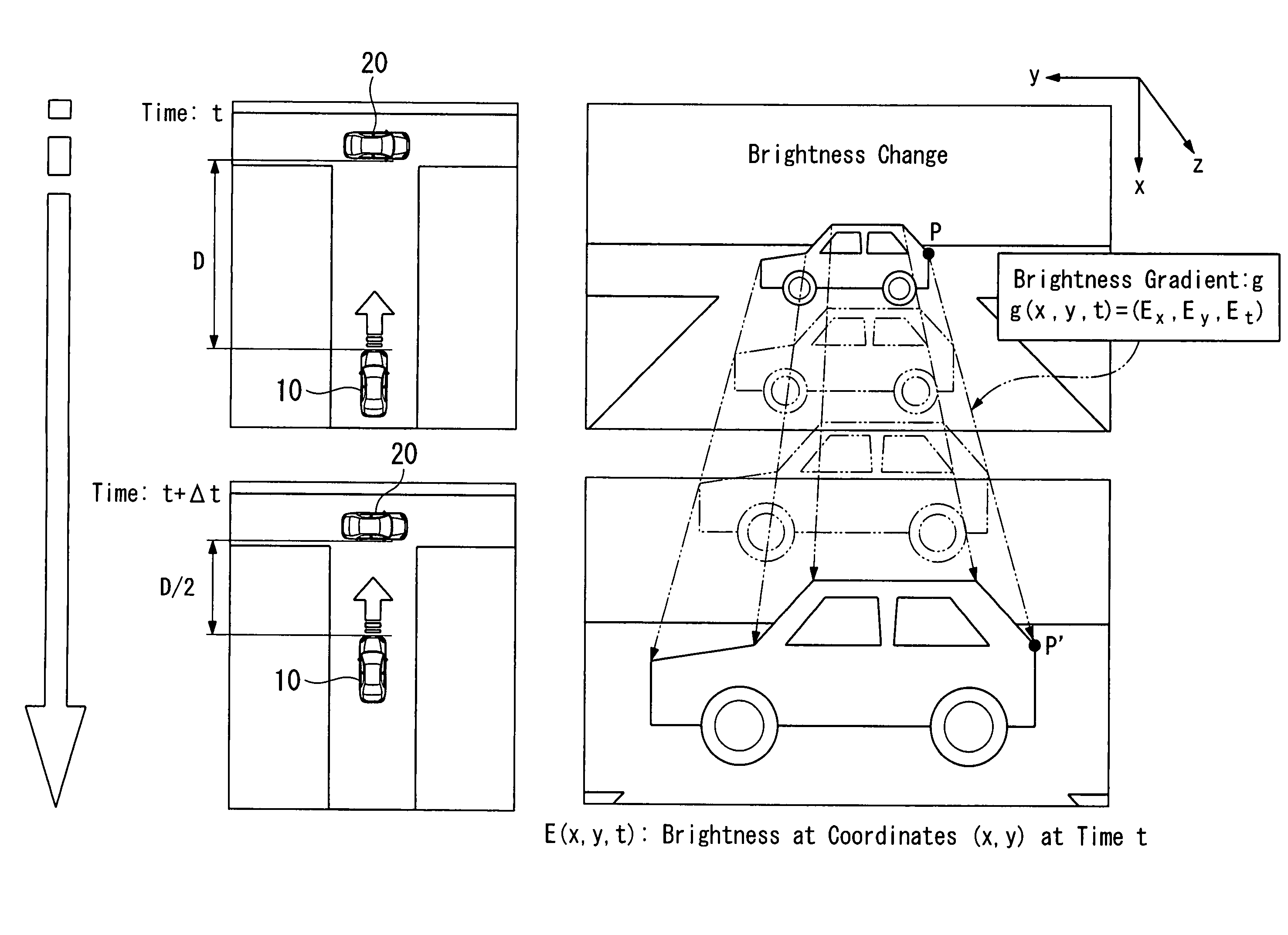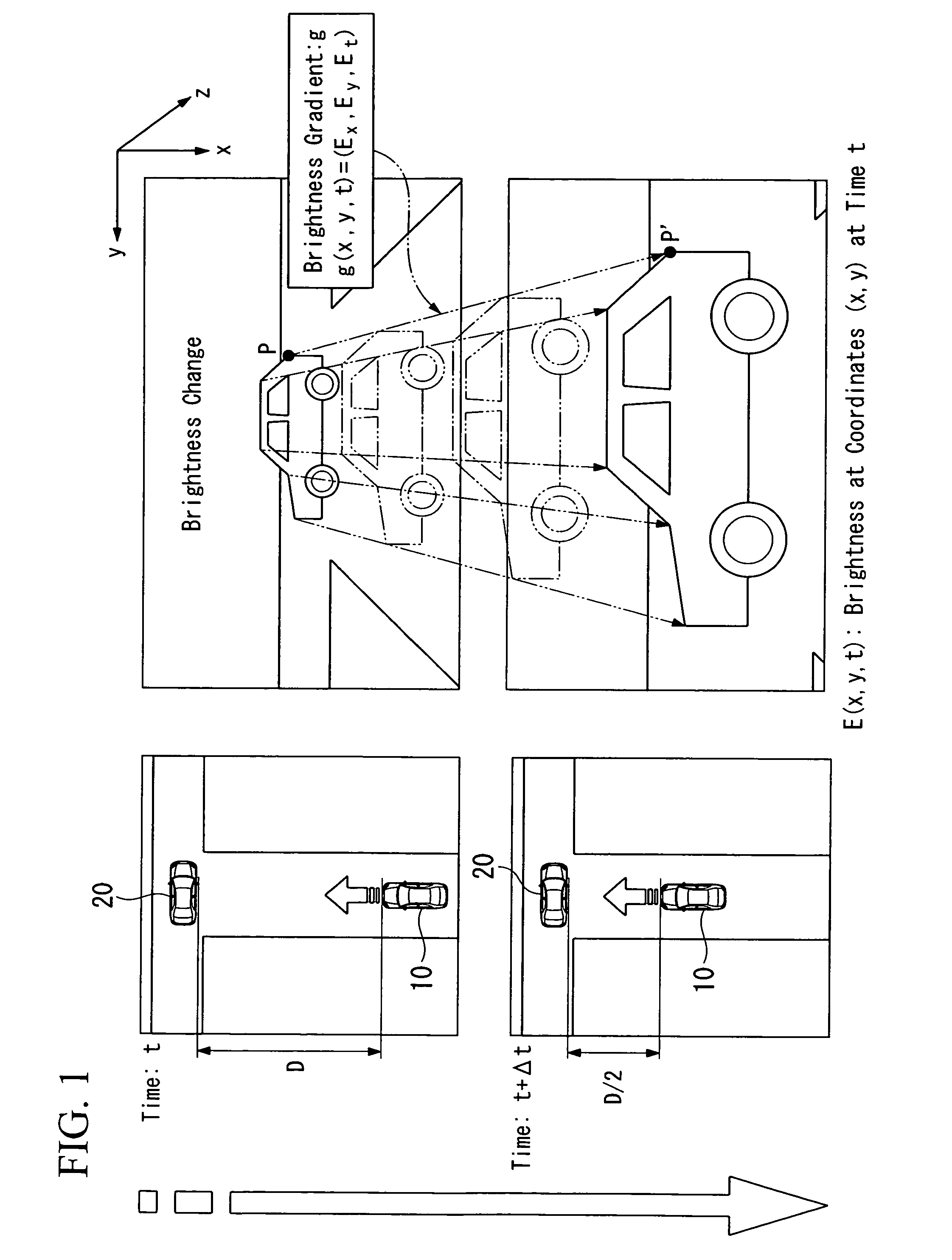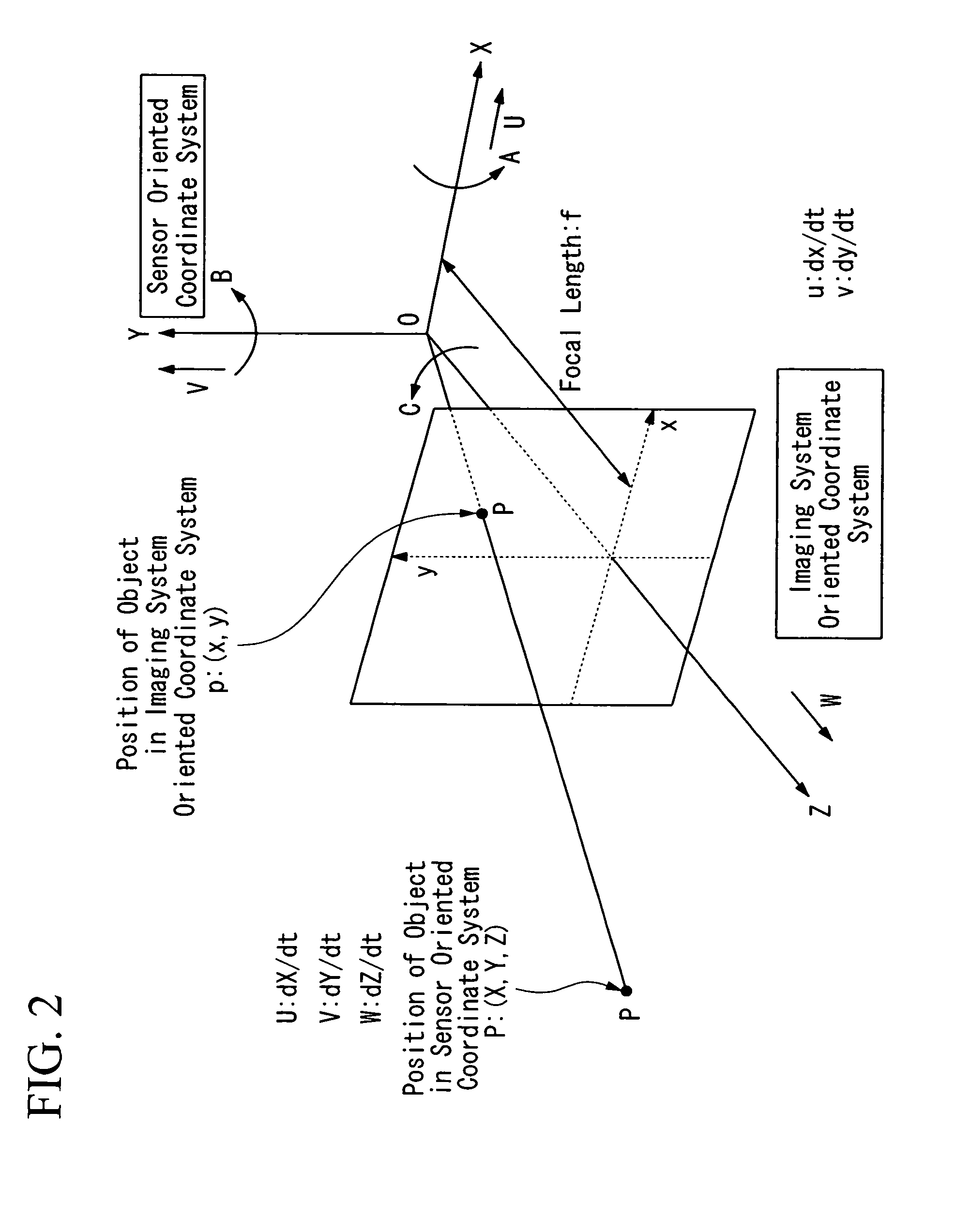Time-to-contact estimation device and method for estimating time to contact
a time-to-contact and estimation device technology, applied in the field of imaging systems, can solve the problems of limited application, high cost, and complex active system, and achieve the effect of low latency and computation
- Summary
- Abstract
- Description
- Claims
- Application Information
AI Technical Summary
Benefits of technology
Problems solved by technology
Method used
Image
Examples
case 1
[0072]In Case 1, as shown in FIG. 7, a translational motion of the camera 2 along a translation path 3, which is in parallel with the optical axis 2a of the camera 2 in this case, toward the planar surface 1 fixed perpendicular to the optical axis 2a (i.e., the normal 1a of the planar surface 1 is in parallel with the optical axis 2a and the translation path 3) is discussed. In this case, because the degrees of freedom of the planar surface 1 and the camera 2 are constrained, i.e., the camera 2 moves along the optical axis 2a thereof without rotational motion, the brightness gradient constraint equation is the simplest form. In addition, by assuming that the object to be considered is a planar surface that is oriented perpendicular to the optical axis 2a of the camera 2, motion vector (u,v) in the image (u=dx / dt, v=dy / dy) can be simply expressed as follows,
u=x(W / Z), v=y(W / Z) C1-(1)
and the time to contact TTC is expressed as follows,
TTC=Z / W C1-(2)
where W is speed of the camera 2 ...
case 2
[0085]In Case 2, as shown in FIG. 8, a translational motion of the camera 2 along a translation path 3, which is arbitrarily determined in this case, toward the planar surface 1 fixed perpendicular to the optical axis 2a (i.e., the normal 1a of the planar surface 1 is in parallel with the optical axis 2a) is discussed. In this case, the degree of freedom of the planar surface 1 is constrained, and the degree of freedom of the camera 2 is not constrained, i.e., the camera 2 moves not necessarily along the optical axis 2a, or not necessarily along a line in parallel with the normal 1a of the planar surface 1. U, V, and W shown in FIG. 2 respectively indicate X, Y, and Z component of velocity in the sensor oriented coordinate system. With regard to these terms, following Equation C2-(1) (i.e., brightness gradient constraint equation) is satisfied, where f is focal length of the camera 2.
u=−f·U / Z+x·W / Z, v=−f·V / Z+y·W / Z C2-(1)
It should be clear that Case 1 discussed above is simply a sp...
case 3
[0097]In Case 3, as shown in FIG. 9, a translational motion of the camera 2 along a translation path 3, which is in parallel with the optical axis 2a of the camera 2 in this case, toward the planar surface 1 of an arbitrary orientation (i.e., the normal 1a of the planar surface 1 is not necessarily in parallel with the optical axis 2a) is discussed. In this case, the degree of freedom of the camera 2 is constrained, and the degree of freedom of the planar surface 1 is not constrained.
[0098]When p and q are defined to be the slopes in the X and Y direction of the planar surface 1 measured in the imaging system coordinate system, the planar surface 1 is expressed by the following Equation C3-(1).
Z=Z0+pX+qY C3-(1)
X=Z·x / f and Y=Z·y / f are substituting into Equation C3-(1) to obtain following Equation C3-(2).
Z(1−p(x / f)−q(y / f))=Z0 C3-(2)
By using the relationship among brightness, these motion vector constraint equations can be expressed by following Equation C3-(3).
rEr(1−p·x / f−q·y / f)(W...
PUM
 Login to View More
Login to View More Abstract
Description
Claims
Application Information
 Login to View More
Login to View More - R&D
- Intellectual Property
- Life Sciences
- Materials
- Tech Scout
- Unparalleled Data Quality
- Higher Quality Content
- 60% Fewer Hallucinations
Browse by: Latest US Patents, China's latest patents, Technical Efficacy Thesaurus, Application Domain, Technology Topic, Popular Technical Reports.
© 2025 PatSnap. All rights reserved.Legal|Privacy policy|Modern Slavery Act Transparency Statement|Sitemap|About US| Contact US: help@patsnap.com



